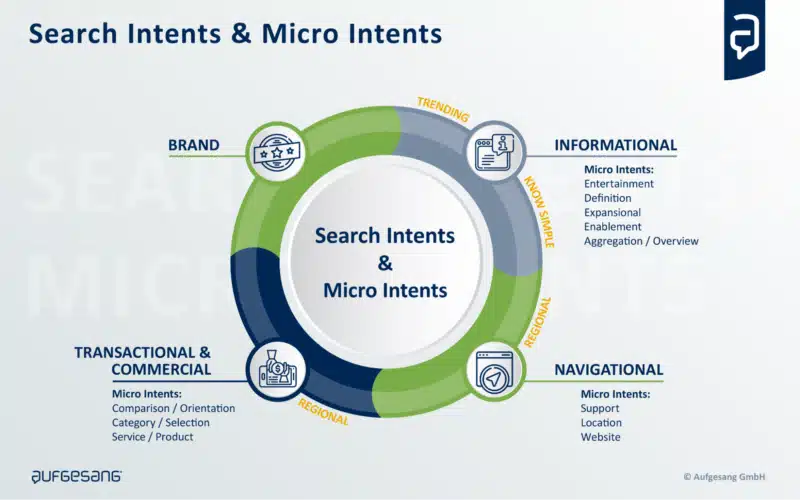Blitz News Digest
Stay updated with the latest trends and insights.
Decoding Search Intent: What Do They Really Want?
Unlock the secrets of search intent and discover what users really want! Click to elevate your SEO game today!
Understanding User Intent: The Key to Effective SEO
Understanding User Intent is essential for effective SEO, as it goes beyond simply targeting keywords. It involves deciphering what users are truly looking for when they input search queries. By aligning your content with their motivations—whether they seek to be informed, make a purchase, or find a solution to a problem—you can enhance user experience and improve your website's visibility on search engines. This focus on user intent allows for the creation of tailored content that uniquely addresses the needs of your audience.
There are generally three types of User Intent: informational, navigational, and transactional.
- Informational: Users seek knowledge or answers to specific questions.
- Navigational: Users intend to visit a particular site or page.
- Transactional: Users are ready to make a purchase or complete an action.

The Psychology Behind Search Queries: What Users Really Want
The psychology behind search queries is a fascinating area that delves into the motivations and intentions of users as they navigate the vast landscape of the internet. When users type in a search term, they are not merely looking for information; they are seeking solutions to problems, answers to questions, or connections to meaningful content. Understanding this underlying **psychology** can significantly enhance how we approach SEO and content creation. By focusing on the user's intent, we can tailor our content to meet their needs, whether that be through informational articles, engaging multimedia, or even subtle emotional appeals that resonate with their personal experiences.
To effectively optimize for these search queries, it's essential to consider not just the keywords themselves, but also the context and emotional state of the searcher. For instance, a user searching for 'how to relieve stress' is likely experiencing anxiety or overwhelm, suggesting that they may benefit from content that offers empathy and practical steps. Conversely, someone looking for 'best meditation techniques' may be more interested in depth and variety in solutions. By recognizing these nuances in search behavior, we can create content that not only ranks well but also builds trust and engagement with the audience, ultimately driving better user satisfaction and loyalty.
How to Analyze and Decode Search Intent for Better Content Strategy
Understanding and analyzing search intent is crucial for crafting a content strategy that resonates with your audience. Search intent refers to the underlying motivation of a user's query, and decoding it can help you align your content with what users are truly looking for. To analyze search intent effectively, consider categorizing queries into four main types: informational, navigational, transactional, and commercial investigation. By identifying the intent behind specific keywords, you can tailor your content to meet the precise needs of your audience.
Once you've categorized search intents, leverage various tools and techniques for deeper insights. Start by examining the top-ranking pages for your targeted keywords to see how they fulfill user intent. Pay attention to the format of the content—whether it’s a blog post, video, or infographic—as different intents often require different content types. Additionally, utilizing keyword research tools and analyzing user behavior metrics can further refine your understanding. Incorporating this data not only enhances your content strategy but also boosts your site's SEO performance.